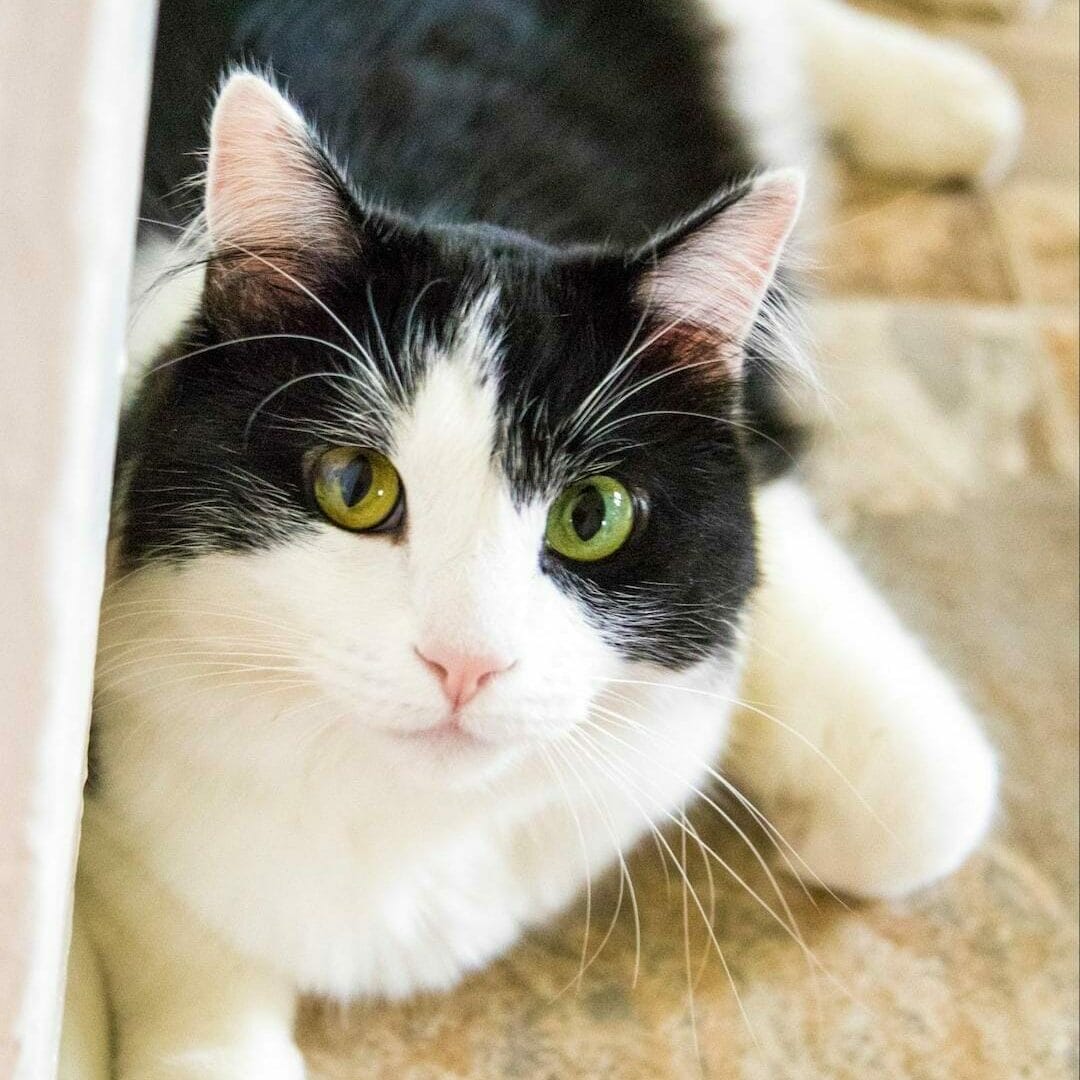
Having a cat as a pet brings a lot of joy and companionship, but it can also present challenges. As a cat owner, you might sometimes wonder how to help your feline friend be more relaxed. Whether your cat is naturally a bit anxious, or just going through a stressful period, here are nine ways to foster a more relaxed environment for your cat.
1.Choose a Relaxed Cat Breed
If you don’t have a cat yet but you’re looking for a calm breed, here are the top five calmest cat breeds:
- Exotic Shorthair: Known for their easygoing and placid temperament, Exotic Shorthairs are often very relaxed and adaptable.
- Persian: Famous for their preference for serene environments, the lazy man’s Persian tend to enjoy quiet, leisurely days and are often very calm and easygoing.
- Ragdoll: Ragdolls are known for their docile nature. These cats tend to be calm, affectionate, and even go limp when held, hence their name.
- Maine Coon: Despite their large size, Maine Coons are often referred to as ‘gentle giants’ due to their easygoing and sociable temperament.
- Russian Blue: Known for their calm demeanor and gentle nature, Russian Blues are typically quite relaxed, though they can be somewhat shy.
It’s important to remember that while these cat breeds are known to be the calmest cat breeds, individual cats may vary, and their environment and upbringing also play significant roles in their behavior. To understand if your cat is comfortable, be sure to watch your cat’s body language. Now, let’s dive deeper into how to make your cat more comfortable, even if they don’t happen to be one of these cat breeds.
2. Create a Safe Space to Help Your Cat Stay Laid Back
Creating a safe space for your cat is important for their well-being and overall comfort. Here are some steps you can follow:
- Choose a quiet spot: Cats prefer quiet and peaceful places where they can relax. Consider choosing a spare room, a quiet corner, or a rarely-used closet.
- Provide a comfortable bed: Cats appreciate a comfortable place to sleep. You can use a cat bed, a soft blanket, or even a heated pad for colder months. Some cats prefer enclosed beds or spaces that make them feel more secure.
- Add hiding places: Cats instinctively like to hide. You can provide boxes, tunnels, or cat furniture with built-in hiding spots. A cat tree with multiple levels can be a great addition, allowing them to climb and observe their surroundings from a height.
- Ensure easy access to resources: Your cat’s safe space should include essentials like fresh water and food bowls. If the safe space is far from the litter box, consider adding another one in the area.
- Include toys and scratch posts: Cats need mental and physical stimulation. Make sure to include toys that your cat enjoys, as well as scratching posts or board to help them exercise their claws.
- Respect their space: Once you have created a safe space, respect it. Avoid disturbing your cat when they’re in their space and train others in your household, including children, to do the same.
- Play music: Cat music can promote a calm demeanor. In most cases, cat music playlists are composed of classical music.
Remember that each cat is unique, so what works for one may not work for another. Experiment with different setups and observe your cat’s behavior to understand what they prefer. The goal is to make your cat feel secure and content in their environment.
3. Maintain a Routine for Consistency
Cats thrive on routine. And maintaining a routine for your cat is critical for their happiness and well-being for a number of reasons.
- Predictability: Cats are creatures of habit and prefer a predictable environment. Consistent feeding times, play sessions, and grooming can create a sense of security and comfort for your cat.
- Reduces Stress: Unexpected changes can cause stress in cats, which can manifest in behavioral issues or health problems. A routine helps minimize such changes and keeps stress levels low.
- Health Monitoring: Regular routines, particularly around feeding and litter box use, can help you quickly spot any changes in your cat’s health. Changes in appetite, weight, or litter box habits can be early signs of health issues.
- Weight Management: Cats love regular feeding times and portions, combined with scheduled playtimes. And, this can help support proper weight management.
- Strengthening Bond: Regular, scheduled interaction, such as playtime or grooming, can strengthen the bond between you and your cat. It ensures you spend quality time together each day, which is important for your cat’s emotional well-being.
- Training and Behavior: Routine can also aid in training and managing your cat’s behavior. For instance, if your cat knows they get playtime after dinner, they’re less likely to engage in unwanted behaviors out of boredom.
In essence, a routine caters to a cat’s natural preference for predictability, contributes to their physical health, supports their emotional well-being, and fosters a strong human-cat bond.
4. Interactive Play with Your Cat
Interactive play can be an effective method that can result in a relaxed cat, and it offers multiple benefits:
- Physical exercise: Interactive play provides cats with much-needed exercise which helps in burning off excess energy. This physical activity releases endorphins, which can help reduce stress levels. Some cats will even play fetch!
- Mental stimulation: Engaging in interactive play challenges a cat’s hunting instincts, keeping their minds sharp and engaged. This mental stimulation can alleviate stress and prevent boredom, which can sometimes lead to anxiousness and destructive behaviors.
- Bonding time: Playtime strengthens the bond between a cat and its human. This bond and the reassurance of companionship can help create a sense of security and comfort for the cat, having a calming effect on nerves.
- Behavior Management: Regular play can help redirect negative behaviors that might be a manifestation of stress. For example, a cat that scratches furniture out of stress might be dissuaded from doing so through interactive play.
- Improved Sleep: Regular play sessions, especially before bedtime, can help a cat sleep better.
- Appetite Stimulation: Playtime often stimulates a cat’s appetite as it mimics their natural hunt-eat-sleep cycle. Eating a satisfying meal after play can have a calming effect and promote normal emotional balance.
- Distraction: Finally, engaging your cat in interactive play can distract them from stressors in their environment resulting in a relaxed cat. It provides a positive outlet for their energy and keeps their minds off things that may be resulting in abnormal behavior.
5. Socializing Your Cat
Helping your cat become comfortable with different people and experiences can go a long way in reducing future stress, including the following benefits:
- Reduced Fear of the Unknown: Socialization exposes cats to various people, animals, and environments, making them less likely to be fearful or anxious when confronted with new situations or individuals.
- Increased Confidence: Socialized cats typically have more confidence, which can help them handle potentially stressful situations with ease. They’re more likely to explore and adapt to changes in their environment instead of retreating in fear.
- Improved Interactions: Socialization helps cats understand how to interact with other pets and humans in a positive and respectful manner. This can reduce potential stressors in the home, such as conflicts with other pets or fear of unfamiliar people.
- Stimulation and Enrichment: Social interactions can provide mental stimulation and enrichment for cats, preventing boredom and associated stress.
- Improved Health: Well-socialized cats are often easier to handle during vet visits or grooming sessions, supporting balanced behavior during these necessary care activities.
6. Use Calming Products to Help Your Cat Get Laid Back
There are many products available designed to help calm cats. Some cats respond well to calming scents or pheromones, which are available in sprays, diffusers, and wipes. These products can make the safe space even more comforting and soothing for your cat. Synthetic cat pheromone diffusers and sprays can create a calming environment.
Full spectrum hemp extract can also aid in promoting normal cat behavior. The benefits of full spectrum hemp extract include:
- Enhances brain function
- Helps animals maintain a normal and relaxed disposition
- Helps keep your pet calm and relaxed
- Helps manage normal stress
- Helps maintain contentment during separation, travel, motion sickness and tension caused by changes in your pet’s daily routine
- May help curb destructive behavior
- Provides help for restless animals
7. Providing a Comfortable Environment for Cats
Creating a comfortable environment for your cat involves catering to their instinctual needs and preferences. Here’s how you can do it:
- Provide plenty of hiding places: Your feline friend loves to hide. Most cats appreciate cardboard boxes, tunnels, or pet furniture with built-in hiding spots to make them feel safe and secure.
- Offer vertical spaces: Cats are natural climbers and enjoy observing their environment from high vantage points. Cat trees, shelves, or window perches can give many cats a ‘bird’s eye view’ of their surroundings.
- Create a safe space: Dedicate a quiet, comfortable spot where your cat can retreat to when they feel stressed or overwhelmed away from other pets and other animals. The area should be away from any loud noises. This could include a cozy bed, soft blankets, and the toys your cat loves. You can even add a teddy bear with your scent for added comfort.
- Keep resources accessible: Food, water, and litter boxes should be easily accessible and located in quiet, low-traffic areas. Ensure there are enough resources if you have multiple cats to prevent competition and stress.
- Maintain cleanliness: Your feline friends are very clean animals and can be stressed by dirty environments. Keep the litter box clean, and regularly wash bedding and food/water bowls.
- Remain calm: Cats sense tension in the household. If you remain calm, your cat is more likely to remain calm and collected.
- Provide mental stimulation: Cats need mental stimulation to be happy. This can include cat toys, puzzles, bird-watching opportunities, and regular playtime with you.
- Ensure proper temperature: Cats are sensitive to temperature. Keep your home at a comfortable temperature, provide warm spots in colder weather (like a heated bed or sunny window sill), and ensure there are cool, shaded areas during warmer months.
Remember, each cat is unique, so it’s important to observe your cat’s behavior and adjust the environment according to their preferences and needs. With some cats, everything listed works. With other cats, it’s more about trial and error.
For further reading, we recommend:
- https://pubmed.ncbi.nlm.nih.gov/34391060/
- https://www.morrisanimalfoundation.org/article/cannabidiol-cbd-use-dogs-and-cats
- https://www.annualreviews.org/doi/10.1146/annurev-animal-081122-070236
- https://penntoday.upenn.edu/news/demystifying-feline-behavior
- https://www.frontiersin.org/research-topics/16480/exploring-cats-their-behaviors-and-human-cat-interactions
You Might Also Enjoy
Your dog’s skin is their largest organ making dog skin care a crucial part of…
Like us, our dogs, and other mammalian species, cats have an endocannabinoid system. This system…
Learning how to calm a dog down is an essential skill to have in your…





